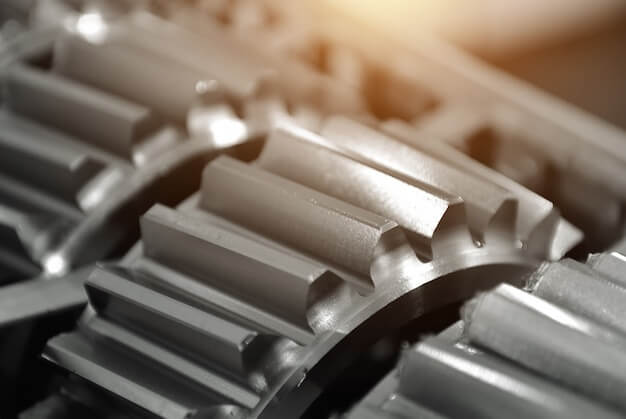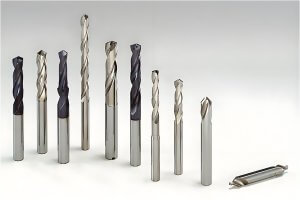Introduction: Importance of CNC Machining and Copper in Industrial Applications
In manufacturing and industrial applications, Computer Numerical Control (CNC) machining plays a crucial role. This technology utilizes pre-programmed software to control the movements of factory machinery and tools with precision and accuracy; this not only improves productivity but also ensures consistent production quality and reduced labor costs.
China Online CNC Machining Service
Among various materials used in CNC machining, copper stands out due to its numerous benefits. Predominantly known for its excellent conductivity, this material is often selected for high volume CNC machining because of it:
- Exhibits excellent machinability- A feature which simplifies the cutting process, decreases tool wear, and increases production speeds.
- Ensures increased thermal and electrical conductivity – critical attributes within electronic components or heat exchangers
- Possesses superior corrosion resistance – extending overall product life in harsh environments.
Overall, when considering high-volume industrial applications, choosing copper for CNC machining can lead to tremendous advantages, leading to optimal performance, durability, and cost-effectiveness of the end product.
Understanding High Volume CNC Machining
In the manufacturing industry, high volume computer numerical control (CNC) machining represents a significant advancement in automation technology. This technique uses programmed software to direct factory tools and machinery, enabling the precise production of complex shapes that would be almost impossible with manual intervention. The primary benefit for industries is its capacity to deliver large-scale production with consistent quality due to reduced human error. For instance, the automobile sector heavily relies on high-volume CNC machining for parts production, ensuring precision, consistency, and speed.
- The process: It involves pre-programmed software guiding the movement of factory tools and machinery, thus allowing for high-precision tasks.
- Industry Preference: Industries prefer it due to its automation capability, which delivers consistently high-quality output, fast turnaround times, and minimized waste.
- An Example Industry: The automotive industry standouts as a prime example employing this technology, using it to manufacture intricate parts accurately and efficiently at high volume.
The Benefits of Using Copper in High Volume CNC Machining
Using copper in high volume CNC machining offers the following benefits:
- Good electrical and thermal conductivity
- Excellent machinability
- Corrosion resistance
- Recyclability
Practical considerations when implementing High Volume CNC Machining with Copper
A shift to high volume CNC machining of copper demands several practical considerations regarding equipment changes, production timelines, and challenges. Firstly, the machinery necessary for large-scale copper processing might necessitate modifications or entirely new installations to handle the precise, rapid, and heat-intensive work. This includes machines such as lathes, routers and mills equipped with advanced technologies like automatic tool changers and cooling systems.
- Equipment upgrades: The switch may involve substantial investment in more robust, faster CNC machines capable of coping with higher operating temperatures and speed, ensuring accuracy despite rigorous use.
- Production Timelines: In addition, it could impact production timelines – initial setup time might increase due to complex configurations. However, over time, these machineries can potentially offer efficiency through automated processes which can reduce manual intervention and errors, thereby improving overall productivity.
- Challenges: Among typical issues encountered boarder around machine wear and tear due to continuous operation, increased power consumption, material waste management, and operational safety concerns relating to the handling of an extremely heat-conductive yet ductile metal like copper.
An old locomotive manufacturer’s move to mass-producing copper components aptly illustrates these factors. Initial stumbling blocks included absorbing the high upfront cost of installing water-cooled CNC machines designed specifically for high-volume copper machining and training their staff on the efficient operation and regular maintenance of this sophisticated machinery. However, once past that, they experienced significant reduction in turnaround times, improved product precision, and lower reject rates – validating their decision to make a sizable initial investment.
Future Industrial Applications and Trends in High Volume CNC Machining of Copper
The future of industrial applications involving high volume CNC machining of copper looks promising, with forecasts suggesting a steady incremental demand. This is predominantly due to the attributes that make copper an excellent material for multiple industries such as electronic appliances, automobile manufacturing, and heavy machinery components.
Further advancements in technology have a significant impact on this trend as they can lead to more efficient and precise machining processes. For instance, the integration of artificial intelligence in CNC machines could enhance error detection, minimize waste, and improve productivity levels.
- Adoption of smart factories along with Industry 4.0 practices would allow remote operation of machines and facilitate predictive maintenance.
- Increased implementation of green manufacturing techniques will encourage recycling, reducing environmental footprint.
- Progress in computer-aided design (CAD) technologies may enable complex geometrical production at large scale.
While the ongoing progression seems impressive, a couple of obstacles are related to machine cost and the required specialized skills to employ these high-tech systems. Yet we speculate that the evolution in training frameworks and a decline in prices due to mass adoption might mitigate these limitations over time.
Conclusion
In conclusion, high volume CNC machining of copper is a process that involves the use of computer numerical controls to automate and control machine tools for the efficient production of machined parts. This technology not only allows for precision and consistency in manufacturing but also brings immense cost benefits by reducing labor costs, enhancing productivity and minimizing waste. However, there are considerations including possible material deformation due to its malleability, and the need for higher maintenance given copper’s propensity to stick to cutting surfaces.
In broader industrial contexts, these advantages cannot be oversimplified; they offer industries novel ways to improve their efficiency, scale up their production, and keep abreast with increasing demands. Conversely, the mentioned considerations serve as reminders of how meticulous organizations have to be while adopting new technologies.
- Definition: High volume CNC machining of copper refers to automated manufacturing processes that employ computer controls for large-scale production of copper parts.
- Benefits: It offers precise part replication, reduced human error, decrease in manual labor, increased safety, lower scrap rates, and ultimately significant cost savings.
- Considerations: Requires careful handling and upkeep due to possible material deformation and sticking phenomena unique to copper.
Other Articles You Might Enjoy
- Precision CNC Machining of Steel: High-Volume Production
Precision CNC Machining and High-Volume Production As an integral part of modern manufacturing processes, Precision Computer Numerical Control (CNC) machining brings about unmatched accuracy and consistency in the production of…
- Material Versatility in CNC Machining: From Titanium to Thermoplastics
Introduction to CNC Machining CNC machining stands as a cornerstone in the manufacturing sector, enabling the precise creation of parts and components. This process utilizes computer numerical control (CNC) to…
- High-Precision CNC Machining for Advanced Semiconductor Manufacturing
Introduction: CNC Machining and its Role in Advanced Semiconductor Manufacturing CNC machining, or Computer Numerical Control machining, refers to the process of subtracting material with high-speed precision machinery instructed by…
- Understanding and Exploring Bead Blasting in CNC Machining(copper plating Murray)
Bead blasting is an integral process in the realm of Computer Numerical Control (CNC) machining, often used for finishing or cleaning metal components. In simple terms, bead blasting involves leveraging…
- Precision CNC Machining for High-Performance Industrial Machinery
Precision CNC Machining for High-Performance Industrial Machinery The process of Precision CNC (Computer Numerical Control) machining is at the core of manufacturing high-performance industrial machinery. This technique leverages a computer's…
- Nickel vs. Cobalt Alloys in High-Temperature CNC Machining: A Detailed Analysis?
Nickel and Cobalt Alloys in High-Temperature CNC Machining Both Nickel and Cobalt alloys play an essential role in high-temperature CNC machining. These metal alloys are popular choices due to their…






